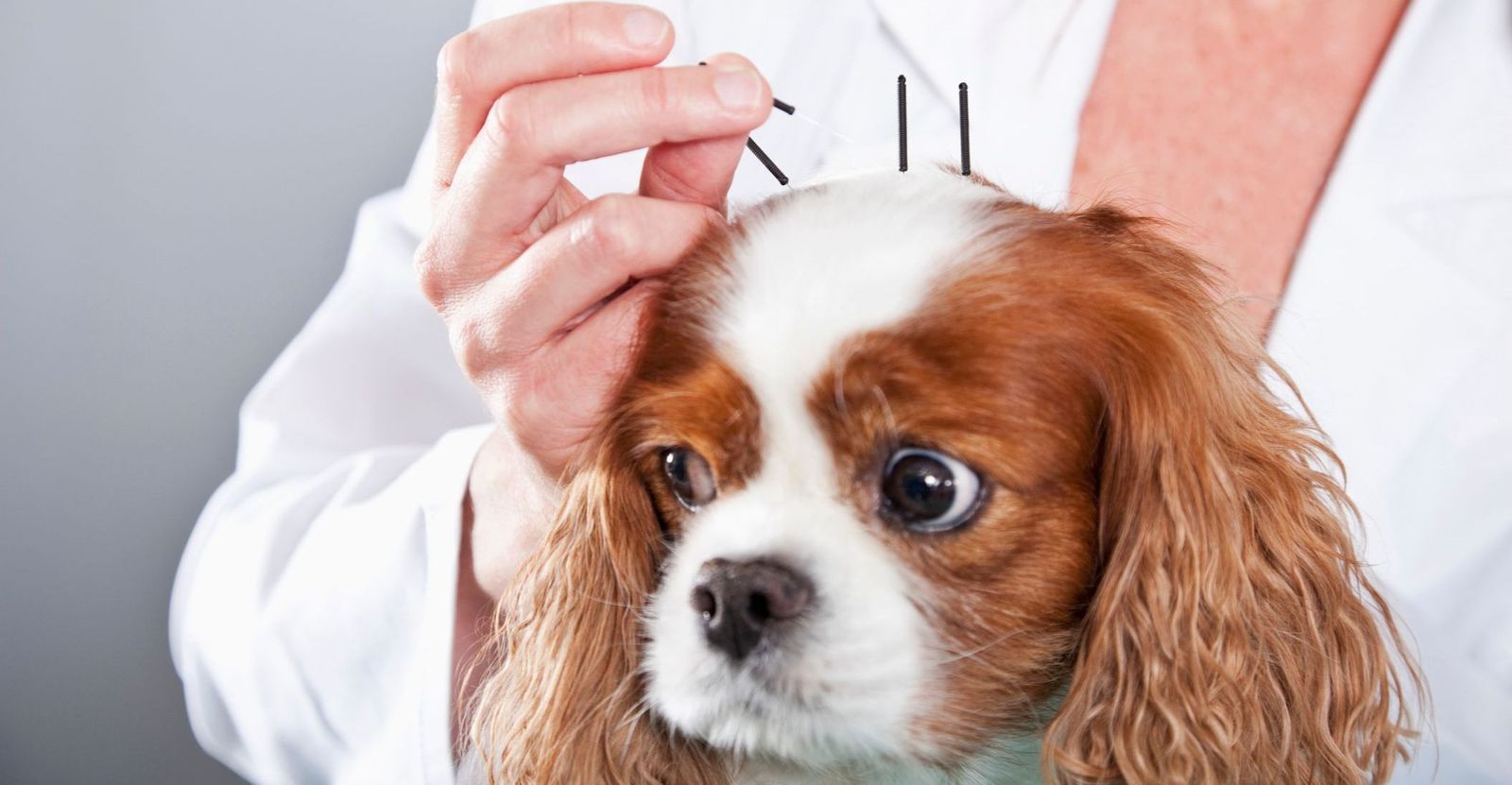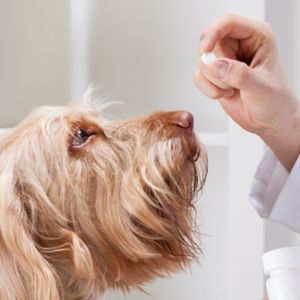Acupuncture for pets

You’ve probably heard of acupuncture as a treatment for joint pain, muscle aches, migraines, and better sleep, but did you know that it could be beneficial for your pet too?
Acupuncture is a branch of Traditional Chinese Medical (TCM) which has been practiced for over 5,000 years. Integrative veterinary medicine, including acupuncture, is a comprehensive medical approach to pet care that combines conventional medicine and complementary therapies, such as TCM.
Traditional Chinese Medicine holds that Qi (vital energy) flows throughout the body along energetic channels called meridians. These meridians have been used to map out acupuncture points in both animals and humans. The meridians connect the external body with the interior. Each meridian is also associated with a specific internal organ, which reflects the physiological and pathological conditions of that organ. By targeting specific acupoints, acupuncture allows veterinary practitioners to effectively treat a wide variety of conditions.
What conditions can acupuncture treat?
Musculoskeletal conditions (including arthritis) Nervous system disorders Urinary tract disease (Including FLUTD in cats) Respiratory tract disorders Cardiovascular disease Skin disease Gastrointestinal disease Reproductive disease
Acupuncture Techniques
There are a variety of different acupuncture techniques that can be used to help manage and treat pet health conditions:
Acupuncture (needles): Sterile disposable stainless steel needles are used to treat specific points on the body. The length and gauge used is determined by the size of the animal, needling technique, and location of the acupoints being treated.
Acupressure (manual): The stimulation of acupoints using finger pressure to maintain or improve the acupuncture treatment an animal receives. Pet parents can learn the techniques to continue the treatment going once home.
Moxibustion (heat): Artemisia vulgaris, or moxa, is a Chinese herb that has been used for centuries to heat acupuncture points. It is used either directly over the acupuncture point without touching it or indirectly attached to the top of a needle. The heat travels down the needle and into the acupoint to stimulate the nerves and promote healing.
Aquapuncture (injection): Stimulation of acupoints by injection using various solutions, including vitamins (especially B12 and C), sterile water, physiologic saline, electrolyte solutions, antibiotics, herbal and homeopathic extracts, analgesics, steroidal and nonsteroidal anti-inflammatory agents.
Electro Acupuncture: In this technique, an electronic alternating current provides stimulation to acupuncture points. Acupuncture needles are attached to electrical leads. Electro Acupuncture is used for acute and chronic pain, and is the technique of choice for intervertebral disc disease with paralysis and other cases with nervous tissue damage.
Laser Acupuncture (LAP): Here, class IV lasers are used to stimulate acupuncture points. LAP can be done rapidly and is especially useful for acupoints that are in sensitive areas of the body.
Plum Blossom (cutaneous): This technique consists of tapping the skin lightly with a hammer-shaped instrument that has a group of needles on the end. One can tap along an entire meridian or at a specific acupuncture point. The Plum Blossom technique is often used to treat chronic dermatologic conditions.
Gold Beads (implantation): Long-term stimulation of acupuncture points can be achieved by implanting gold beads or wire. In general, it’s only used for severe conditions where other acupuncture techniques have failed and/or Western medicine is not effective. It’s also recommended for use in animals that won’t tolerate regular acupuncture treatments, or those that have advanced osteoarthritis. Gold beads are also used to control seizures, gingivitis-stomatitis in cats, and chronic sinusitis-conjunctivitis.
Cupping (vacuum): A cupping jar is a small bottle with a smooth and rounded mouth used to create a partial vacuum over the skin. The cup is firmly placed over the acupuncture point. This technique is used to improve blood circulation and relieve pain.
Acupuncture and safety
Acupuncture is one of the safest forms of medical treatment for animals when it’s administered by a properly trained veterinary acupuncturist. Side-effects are rare, and are usually seen in the form of lethargy or sleepiness for 24 hours following a treatment.
FAQs
How does Acupuncture work?
Acupuncture points are located along meridians, and when stimulated can relieve pain and restore normal body functions.
Does acupuncture hurt?
No, most animals pay little attention to the needles being placed, and often get sleepy during treatment, especially during electroacupuncture treatment.
How long does an acupuncture treatment last?
Stimulation of an individual acupoint can take as little as 10 seconds or can last up to 60 minutes. It depends on the technique used and the condition treated. A typical treatment lasts 15-20 minutes.
How often will my pet need acupuncture?
The length and frequency of acupuncture depends on the condition and the technique of acupuncture used. Typically, most animals need acupuncture at least once weekly for 4-6 weeks as a minimum.
How long does it take to see the beneficial effects of acupuncture?
In some cases, a response can be seen after one to two treatments; however to achieve a maximal positive response it typically will take approximately 4-6 weekly treatments. Acupuncture treatments build on each other and a series of treatments is usually necessary.
Does my pet need maintenance acupuncture?
For chronic cases, yes. Acupuncture is typically done weekly until a maximum therapeutic response is achieved and then tapered off to the least number of treatments necessary to maintain the pet’s condition.
Acupuncture techniques are often used in conjunction with Chinese herbal medicine in order to increase clinical results. The combined effects are also stronger which is especially important in the treatment of difficult cases.
To find out if acupuncture is right for your pet, speak with a veterinarian. Vetster’s licensed veterinary professionals are available 24/7 and are happy to provide advice tailored to your pet’s condition.
Resources:
https://www.ivas.org/about-ivas/what-is-veterinary-acupuncture/
https://www.ahvma.org/holistic-veterinary-therapies/
https://www.aava.org/resources/what-is-acupuncture/




